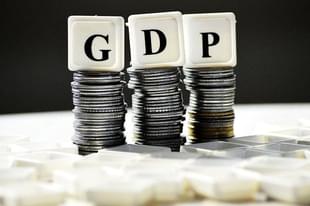Economy
Q2 Falling GDP Numbers: What They Don’t Say
Karan Bhasin
Nov 30, 2019, 01:49 PM | Updated 01:49 PM IST
Save & read from anywhere!
Bookmark stories for easy access on any device or the Swarajya app.


As feared, the Gross Domestic Product (GDP) data, which is a routine statistical exercise, has been politicised as the fresh figures emerged.
Many anticipated the economic figures to be closer to 4.2 or 4.3 and so the fact that it came at 4.5 means that things weren’t as bad as many had anticipated.
However, this article is not to compare the poor record of the previous government with the low growth in the last few quarters.
That issue has been dealt with in detail in many articles in the past by several authors.
However, the concern with the current GDP figures are not with the low real growth of 4.5 per cent but the fact that nominal growth was just 6.1 per cent. That is, the GDP deflator is 1.6.
The low GDP deflator is not a surprise as Wholesale Price Index (WPI) inflation has been largely persistently subdued.
It is precisely here where we have a problem as it acts as a signal of subdued demand. Moreover, when GDP growth is less than the cost of G-Securities yields, then we’ve got a major problem.
All this points towards the monetary macroeconomic mess of having a sustained period of high real interest rates at a time when we were trying to get over a banking crisis.
The silver lining in the cloud is that private consumption expenditure has increased and we’re picking up early signs of revival of demand.
However, private investments are simply not picking up. This, at a time when the government is looking at a fiscal deficit of 3.6-3.8 per cent implies that fiscal expansion is not as effective as one would have anticipated.
Perhaps, many look at the 135 basis point cut and feel that it was enough, but they ignore how inflation has been 100 basis points lower and, therefore, effectively our real rates haven’t averaged significantly lower than before.
Moreover, even nominal rates don’t reflect the extent of these cuts due to transmission issues while M1 and M3 growth is not something that RBI has considered of late to drive transmission.
All of this makes one wonder where the RBI is fully cognizant of what’s happening in the economy or if they’re happily off to another planet where inflation is persistently high and growth is even higher.
The low deflator, low investments and low nominal growth rates all point out how we’ve got a problem. As is the case, even Index of Industrial Production (IIP) figures aren’t encouraging for October.
In an earlier exercise, I found a strong statistical causal relationship between IIP and real interest rates. No wonder IIP is sluggish as the real cost of capital is so high.
At a time when the government has addressed the problem on the cost of taxation front, we’ve got a monetary policy that isn’t doing enough but more importantly, one that claims to do ‘whatever it takes’ yet still do too little too late.
Perhaps, the job is not an easy one. However, which job is?
What’s happening in India is not unique. Every country has experienced a similar set of challenges at some point in their development trajectory.
Business cycles change and slowdowns are a frequent occurrence. There’s a global slowdown too but the extent of India’s slowdown convincingly demonstrates how the problem is domestic and it is monetary in nature.
Now would be the time for RBI to step up and learn from the experience of other countries. While we may have bottomed in Q2, it will take time to get back to the 7 per cent growth levels, and this is precisely why India’s central bankers need to wake up and smell the coffee.
This is the precise moment for the Governor to back his words by strong actions this is — the moment where he must do whatever it takes to revive our growth for North Block has done nearly everything that it could have.
Also Read Part 1 of the series: Q2 Growth Stands At 4.5 Per Cent: Why The Worst Might Just Be Over





